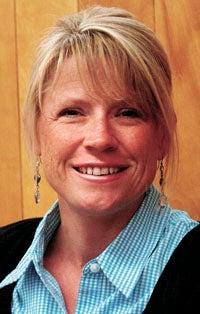Take action toward healthy children
Published 9:38 am Friday, June 1, 2012
Column: Amy Pleimling, Dietitian Speaks
I have been working with the fifth-graders in the Albert Lea School District this year, teaching them about what it means and what it looks like to eat healthy.
My last lesson with this group is about the importance of physical activity. While I was preparing for this presentation, I came across some startling statistics I thought I’d share with you about the youth in America. These may or may not surprise you, but either way, they are worth acknowledging.
• Over the past 30 years, childhood obesity rates in America have tripled! Nearly one in three kids in America is either overweight or obese. These numbers are even higher in African-American and Hispanic communities, where the percentage is nearly 40 percent.
• Overweight children are likely to become overweight adults.
• All of these children face serious, yet preventable obesity-related health risks like heart disease, high blood pressure, diabetes, asthma and certain types of cancer.
• Kids ages 8 to 18 spend an average of 7.5 hours a day using entertainment media, including TV, computers, video games, cellphones and movies.
• One-third of high school students get the recommended levels of physical activity.
• Only 8 percent of elementary school students and 6 percent of middle school students have daily physical education at school.
• We are currently eating 31 percent more calories than we did 40 years ago — including 56 percent more fat and 14 percent more sugar.
As I read these statistics from the government, I feel frustrated that childhood obesity is a problem because it is for the most part preventable. In my line of work I often see people willing to make changes when they have been told they have a certain health condition. What I mean is, people come in far too often after they have been diagnosed with high cholesterol or after they have had a heart attack. At that point, many realize that a healthy lifestyle will have a positive impact on their longevity. What I don’t see as often is people wanting to learn how to be healthy to prevent diseases. Prevention should be more of the focus. That is why I feel it is of the utmost importance to teach kids healthy habits now.
The above statistics make it clear that if we do not make changes, that these kids will have more health issues when they are adults. You might have heard that if we don’t help our children learn to eat right and be active every day, then this generation will be the first to live shorter lives than their parents. In fact, 30 percent of kids born in 2000 or later will have diabetes at some point in their lives.
Every child should have the opportunity to be healthy. To me, the first step in raising healthy kids is awareness. There are many reasons we are in this situation, but for sure kids are less active now. We know this, but knowing and doing are two different things.
The second step is taking action. We need to actually make it a point to see that our kids are active for one hour each day. Years ago, the activity was more of a given; now it isn’t.
From my work with fifth-graders, I realized that if a child is not in an organized sport — which many are not — it can be hard to get to this goal. Even then, a sport might take place two or three days per week. We need to go above and beyond to encourage kids to achieve an activity time of one hour per day.
There are many ways we can do this. It can (and should) be just about going out to play with friends. It can be a family bike ride, walking the family dog or going to the beach in the summer. It is about making a point to limit screen time and moving more.
Of course, a very important piece of this is that the kids should feel that the activities that they are doing are fun. If they enjoy themselves, they will seek activities out on their own eventually. Another piece of this puzzle is that parents can encourage activity, but it will have much more of an impact on their kids if they are making a point to be active themselves.
There are many initiatives that are making great efforts toward healthy kids that encourage affordable, healthy eating and regular physical activity. But we all can play a role in reducing childhood obesity and raising healthy kids.
Whether you are a parent, a grandparent, a health care provider, have a role in the schools or community-based organizations or private companies, we can and we should take action toward the health and well-being of today’s youth.
The above statistics came from: Action for Healthy Kids (www.actionforhealthykids.org) and from the First Lady’s Let’s Move campaign (www.letsmove.gov), which are about putting kids on a path to a healthy future by educating parents, providing healthier foods to schools and fostering healthy environments.
Amy Pleimling is the dietitian for the Hy-Vee grocery store in Albert Lea.


